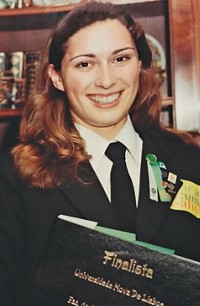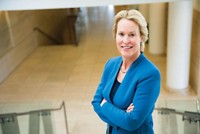Advertisement
Grab your lab coat. Let's get started
Welcome!
Welcome!
Create an account below to get 6 C&EN articles per month, receive newsletters and more - all free.
It seems this is your first time logging in online. Please enter the following information to continue.
As an ACS member you automatically get access to this site. All we need is few more details to create your reading experience.
Not you? Sign in with a different account.
Not you? Sign in with a different account.
ERROR 1
ERROR 1
ERROR 2
ERROR 2
ERROR 2
ERROR 2
ERROR 2
Password and Confirm password must match.
If you have an ACS member number, please enter it here so we can link this account to your membership. (optional)
ERROR 2
ACS values your privacy. By submitting your information, you are gaining access to C&EN and subscribing to our weekly newsletter. We use the information you provide to make your reading experience better, and we will never sell your data to third party members.
Food Science
Career Ladder
Career Ladder: Abril Estrada
This biomaterials chemist makes pet food proteins from nonanimal sources
by Melissa Gilden
April 28, 2020
| A version of this story appeared in
Volume 98, Issue 17

1998
Choosing chemistry
Abril Estrada was born in El Paso, Texas, and raised just over the border in Juárez, Mexico. She always had a general interest in science, though she wasn’t drawn to any particular discipline. But she saw what was happening to Juárez, which in the 1990s rapidly became an industrialized city. Estrada witnessed how globalization, manufacturing, and a huge influx of people affected the environment of her hometown. When it came time for her to head off to the University of Texas at El Paso, Estrada thought she would be studying environmental science. However, after taking her first organic chemistry class, she knew she had found her niche. “Maybe I could help fix a lot of those issues through science and through chemistry,” she says. While at UTEP, she worked in a lab doing combinatorial solid-based organic synthesis, which set her off on the path toward her PhD.
2003
A biomaterials focus
When Estrada arrived at the University of California, Santa Barbara, to do her PhD, she knew she wanted to do research that combined different scientific fields. She landed in a lab that worked to understand and repurpose marine materials like squid beaks and mussel glue. The integration of multiple fields, like marine science, biology, and polymer science, “encouraged me and kept me motivated,” she says. Her research project centered on the synthesis of bioadhesives, using inspiration from marine species.
2017
Founding Wild Earth

After her PhD, Estrada went to work for Clorox. Working in the food division, she began to find an outlet for her passion for biomaterials. “Food is the ultimate material,” she says. She felt that food science brought all her experiences together. In 2017, she met Ryan Bethencourt, who had the idea to create a different kind of pet food company—one that uses nonanimal proteins. In the US, a quarter of meat production goes to pet food; that production has a huge impact on the environment. Estrada says that the idea of combining her knowledge of food and materials science to produce something as relatable as pet food sounded extremely rewarding. In 2017, she and Bethencourt founded Wild Earth.
Today
Off the ground

To produce food with high protein content and no animal sources, Wild Earth uses fungal species like Saccharomyces cerevisiae and Aspergillus oryzae, commonly known as koji, which is used in Asia to produce soy sauce and miso. These species have been used as fermentation workhorses for centuries, but they have only recently been investigated for their nutritional content. It turns out they’re high in protein for a nonanimal source and also high in fiber because of the β-glucans in their cell walls. Now the chief product officer of Wild Earth, Estrada says that she never saw herself cofounding a company but is happy to be making a difference through business. “Opportunity exists everywhere you look,” she says.





Join the conversation
Contact the reporter
Submit a Letter to the Editor for publication
Engage with us on Twitter